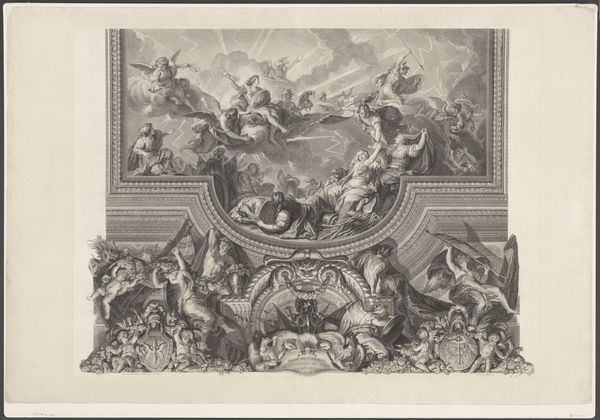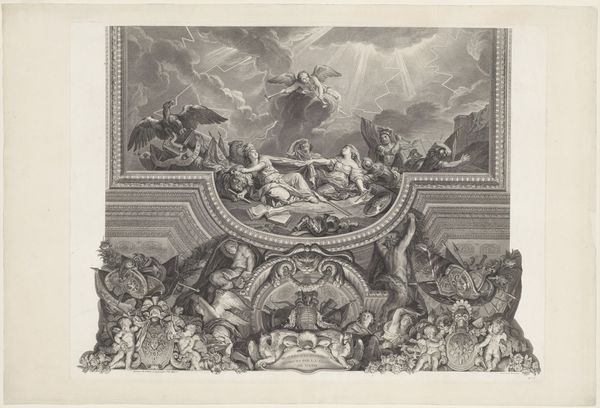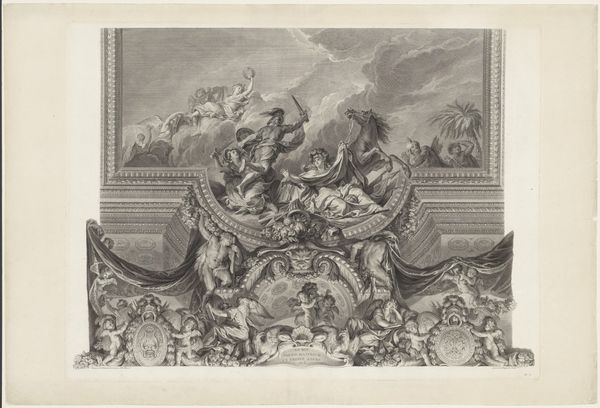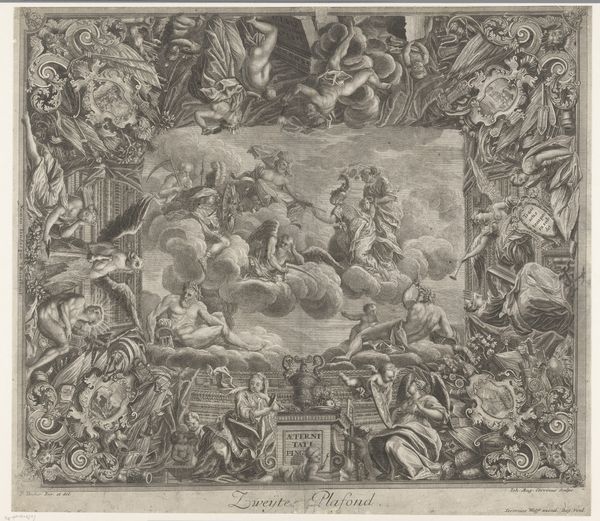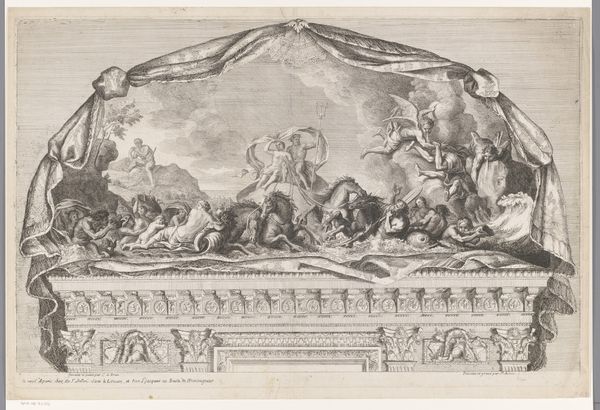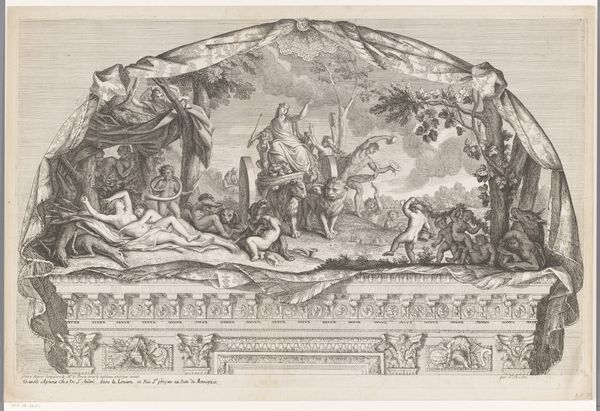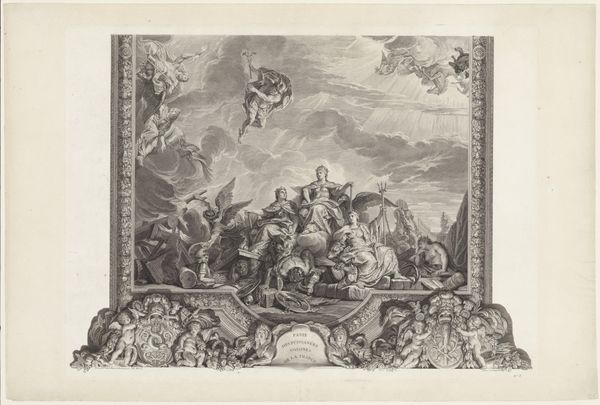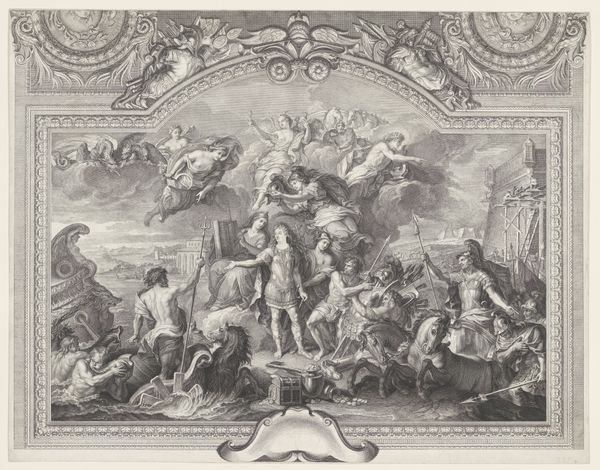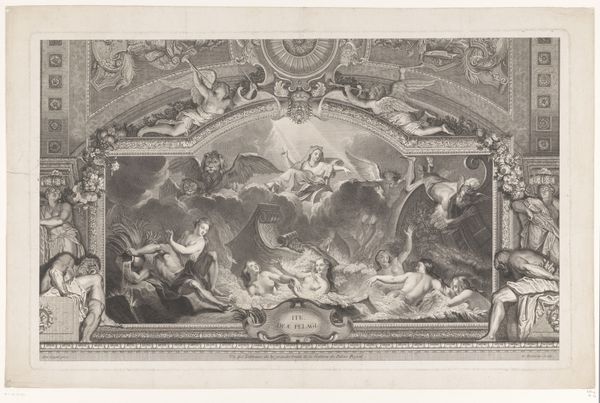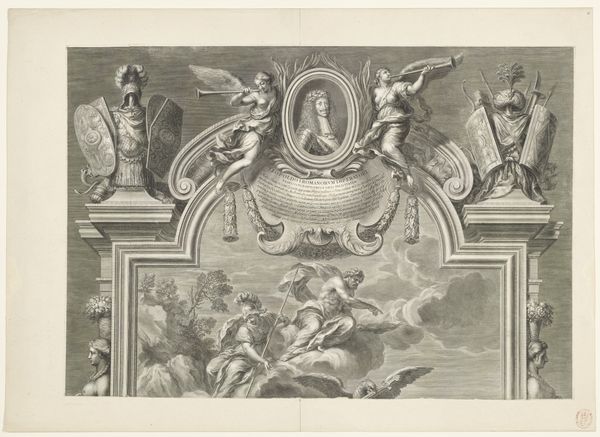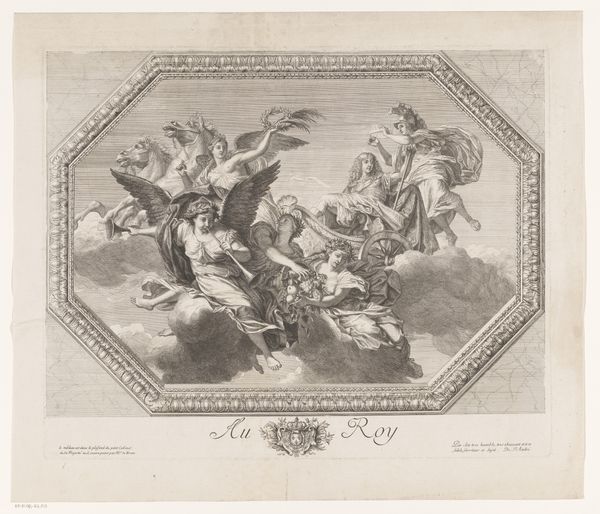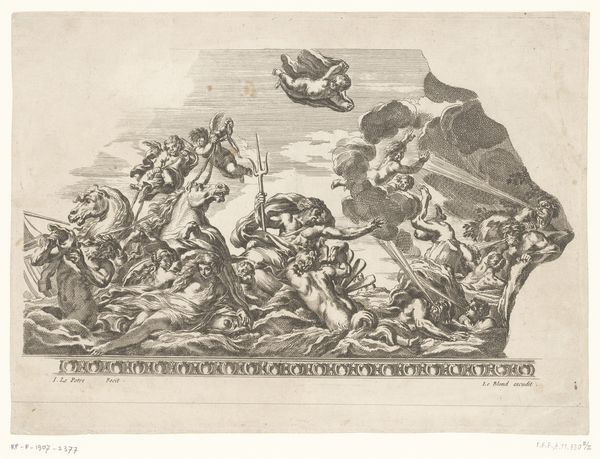
Plafondschildering in de Grande Galerie van Versailles met de passage door de Rijn 1752
0:00
0:00
print, metal, engraving
#
allegory
#
baroque
# print
#
metal
#
charcoal drawing
#
figuration
#
pencil drawing
#
line
#
history-painting
#
engraving
Dimensions: height 602 mm, width 795 mm
Copyright: Rijks Museum: Open Domain
Editor: This is a print of a ceiling painting by Charles Dupuis, dated 1752. It’s titled "Plafondschildering in de Grande Galerie van Versailles met de passage door de Rijn," depicting, I guess, a scene from the Grande Galerie in Versailles. It’s really ornate and… triumphant, I suppose. What is it about art, like this piece, that makes it such a political tool? Curator: It’s interesting you picked up on that. Consider Versailles itself: a grand stage for the monarchy. The arts were strategically deployed to cultivate and disseminate power. Representations of historical events and allegories, such as this ‘passage through the Rhine’, became statements of political ideology, crafted to elevate the monarchy's image. Does the imagery itself give any clues to you as to *how* it's doing that? Editor: Well, everyone’s in motion, elevated… Gods and goddesses mingling with earthly figures. The chariot riding through… it seems like a clear indication of military might and divine right, wouldn’t you agree? But how effective could these images really be? Did people actually believe it? Curator: That’s the key question! Whether ‘belief’ in a literal sense is as important as the creation of a shared visual language is up for debate. Baroque art such as this contributes to the construction of public identity and reinforces a certain world view. The constant bombardment of carefully crafted imageries, from ceiling paintings to engravings like this which served to further distribute imagery outside the Palace, helped normalize and naturalize hierarchical social structures. Editor: So, it’s not about whether people believed in gods, but about reinforcing social structures. And by reproducing this painting as a print, the image itself became a tool for further dissemination of those ideologies. Curator: Precisely. It highlights the potent role that seemingly decorative art can play in shaping public opinion. These artworks can solidify power dynamics. Editor: It’s fascinating to consider the work as more than just decoration, but as an active agent. Thanks for offering a glimpse into the socio-political framework of Baroque art! Curator: And thank you for teasing out some really vital ways of understanding the politics of imagery!
Comments
No comments
Be the first to comment and join the conversation on the ultimate creative platform.
